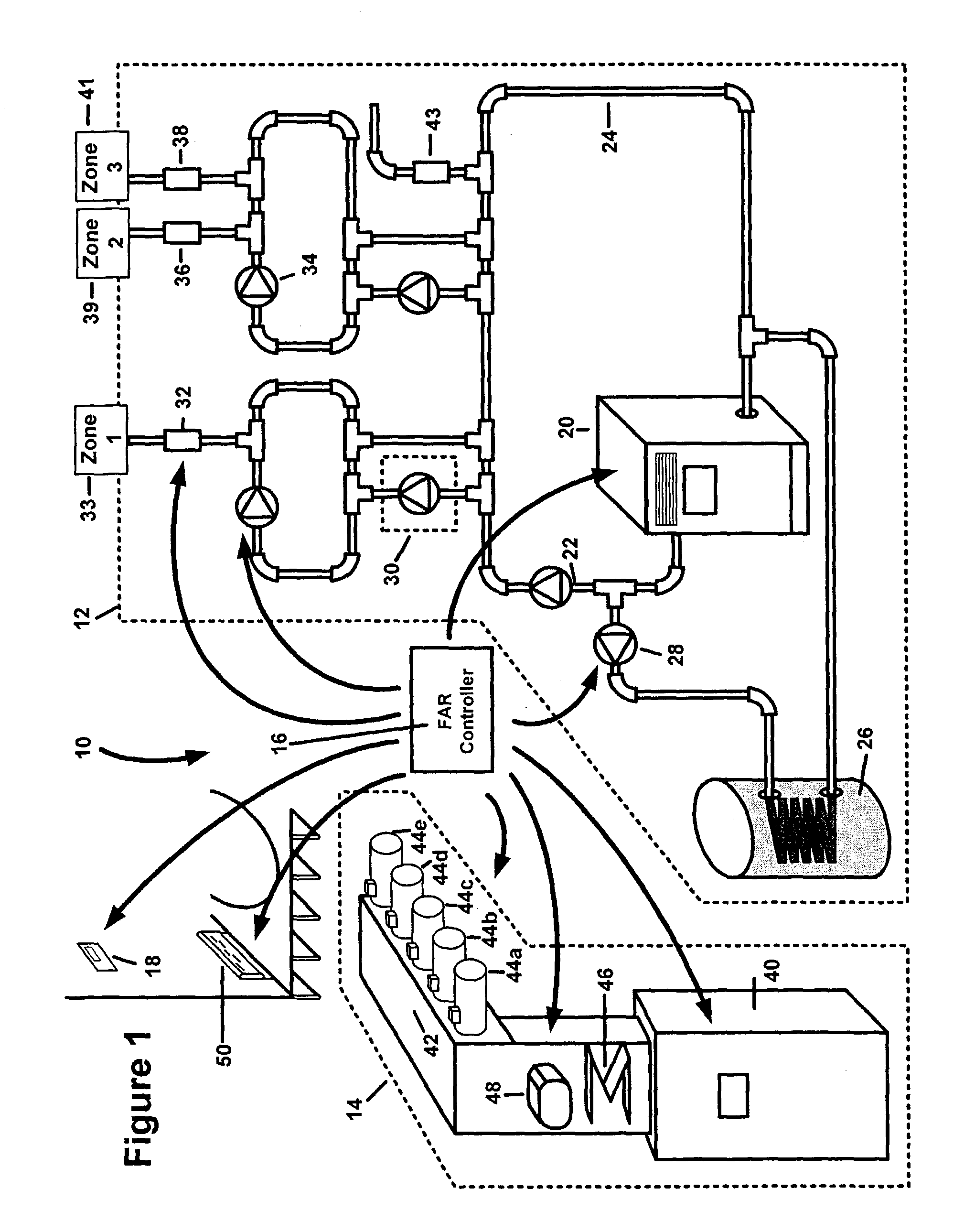Combination radiant and forced air climate control system
a technology of climate control system and control system, which is applied in the direction of domestic cooling equipment, heating types, instruments, etc., can solve the problems of inability of radiant heating system to quickly heat a room, inability of forced air controller to communicate and coordinate heating functions, and dramatic drop in temperature within one heating zon
- Summary
- Abstract
- Description
- Claims
- Application Information
AI Technical Summary
Benefits of technology
Problems solved by technology
Method used
Image
Examples
Embodiment Construction
[0033]Referring first to FIG. 1, thereshown is a climate control system 10 of the present invention for a residence or small business. The climate control system 10 of the present invention includes a primary radiant heating system 12 and a forced air HVAC system 14. Both the radiant heating system 12 and the forced air HVAC system 14 are zoned systems that have the ability to independently provide heating and / or cooling to a plurality of individual zones. It should be understood that each zone is typically a room or group of rooms in the residence or small business.
[0034]In accordance with the present invention, both the radiant heating system 12 and the forced air HVAC system 14 are controlled and operated by a single controller 16. The single controller 16 is also connected to a plurality of individual single stage zone thermostats 18 that allow the occupants to set a desired temperature for the individual zone. The zone thermostats 18 each generates a heating demand signal or a ...
PUM
 Login to View More
Login to View More Abstract
Description
Claims
Application Information
 Login to View More
Login to View More - R&D
- Intellectual Property
- Life Sciences
- Materials
- Tech Scout
- Unparalleled Data Quality
- Higher Quality Content
- 60% Fewer Hallucinations
Browse by: Latest US Patents, China's latest patents, Technical Efficacy Thesaurus, Application Domain, Technology Topic, Popular Technical Reports.
© 2025 PatSnap. All rights reserved.Legal|Privacy policy|Modern Slavery Act Transparency Statement|Sitemap|About US| Contact US: help@patsnap.com



